 1 / 14
1 / 14

 1 / 14
1 / 14

Yasemin Genç Uygur is a young and successful entrepreneur, who created her own brand in many different sectors. Currently, she works as a parenting coach. Taking inspiration from previous collectors she has in her family, she developed an early interest in collecting. She possesses many collections, which reflect her aim to engender her children’s interest and sense of wonder. We met with Yasemin Genç Uygur at the Rahmi M. Koç Museum, to where she donated her vintage hats collection and we had a deep discussion on collecting, from vintage hats to collectable coca-cola cans. We would like to thank Rahmi M. Koç Museum, for making possible this special interview and photo shoot .
Can you please introduce yourself?
I was born in 1981. My interest in old periods has started at an early age. I grew up in a house that was full of antiques. There are important collectors in my family, and thanks to growing up in a house like this, I have always ascribed further meanings to old objects. Indeed, I used to imagine these objects have their own stories and that they touched the lives of other people.
Later I met with my grandmother’s hats. When I was around 8-9 years old, I used to get in her closet to try on her dresses, wear her big hats and strike a pose. These were entertanining family stories. We all were living in the same apartment: my grandfather, grandmother and aunt. This was how we entertained ourselves at nights. I developed an interest in vintage hats with my grandmother’s hats. My grandmother passed on her hats to me, and as I grew up and started traveling abroad, I started visiting old vintage shops. This is how I started collecting vintage hats and how my collection grew. Sometimes my mother’s friends were saying ‘’You are collecting hats. My late mother has hats. I don’t want to throw them away, but I don’t know what to do with them either’’ and hence they started giving their hats to me.
Later in 2007, I opened my shop in Beyoglu. This was a vintage shop named Şeymel. I was displaying my hats on its walls. The major reason behind my decision to open my shop was that my family had vast numbers of vintage clothes. In the past, they bought fabric from Europe, brought them home, and made 5 different dresses out of one fabric. They kept all of them; 5 dresses made of 1 fabric. After thinking of what I should do with these dresses, I came up with the idea of opening a shop. As time passes, antique dealers started showing their vintage hats to me. As they knew how fascinated I was by vintage hats, they sold them to me at enormous prices. I really payed a lot of money. However, this was my collection. When you add unique pieces to your collection, you get excited and more devoted. Whenever someone said ‘’Yasemin, we found a new hat!’’ I was dropping all my work and running to see that hat, just like a kid running to a chocolate shop. Şeymel was open between 2007-2013, until when I moved to other side of the city, got married and become a mother. Then, I had to close the shop as it was not convenient anymore.
Another reason was that vintage is fashion, sometimes it becomes popular sometimes it doesn’t. I used to rent lots of vintage clothes and hats to film and series productions. They suddenly started making and using costumes instead of renting them, or used badly the clothes they borrowed from me. That’s why I closed my shop, but I kept storing my vintage hats in that building. They stayed there for two years. I always had a question of what should I do with them. I wasn’t able to take them home but I didn’t want them to be out of sight either. I contacted with a famous shop to donate them, they weren’t interested.
I never thought of selling my collection. When I was donating it to this museum I felt like I was putting my hats in my house.
How did you associate your collection with Rahmi M. Koç Museum?
One day in 2014, I visited the museum with my husband. It was the first time when we brought our daughter to see the museum. I was showing her my grandfather’s sailboat, which was also donated to this museum. Then I wished this was the place (for my hats) and I was intrigued to check the museum website. I sent an email to the museum director and said that I was interested in making a donation. They said they didn’t except any objects from recent past. I was talking about a collection starting from the 1890s. My intention was to donate 72 hats out of 100, which dated from the 1890s to the 1970s. They were interested in my collection, and visited my storage. They took pictures and looked at my pieces one by one. They said they had to find and/or create space to exhibit vintage hats at the Rahmi M. Koç Museum.
They paid a lot of attention to details and put a great effort, and designed the display cases that you see here. Then, they invited me to the museum to discuss each hat one by one. The only piece that is not currently on display here is my father’s grandfather’s hat which he wore in the parliament. They are storing his hat until they find a special place for it, as part of a nostalgic display. The entire process took 6 months. I feel very happy about donating my collection to Rahmi M. Koç Museum. I’ve never thought of selling my collection. When I was donating it to this museum, I felt like I was putting my hats in my house. They made me feel this way. This might be a simple collection for some people but it is important to me to know that my kids will see their mother’s collection here. This is the most important legacy that I could leave to my children.
I think some people wanted to buy your collection.
Yes, an American costume designer came to Şeymel and wanted to buy all hats for 45 thousand dollars. My best pieces were on the walls of my shop. Without hesitation, I said they were not on sale. If someone asks me again, I would still say no. This is the best legacy I could give to my kids, and I believe, they will understand what this means in the future.
Is your vintage hats collection still growing?
Not with the same devotion that I had in the past. Recently, I entered in a vintage shop in Barcelona where I saw really beautiful hats. Each was approximately 400 euros. If I saw them in the past, I would definitely buy 3-5 pieces and spend a fortune on them. Perhaps, this period of my life is over. My hats found their home. I feel like I have to close this chapter. For other subjects, yes, my interest in collecting continues.
Really? What other collections do you have?
Vintage clocks. Not watches but showcase clocks. These interests are coming from my grandmother. I aim to transfer similar interests to my daughter. With her, we are collecting postcards when we travel abroad. Another collection subject is pharmacy equipments. My grandfather was a pharmacist so I have lots of pharmautical equipments left from him such as pharmacy bottles from the 1930s and books. My mother has sea shells and mussels collected from all over the world. Of course, these are not like a stamp collection, you need to have enough space to store such big objects. A stamp collection can be easily kept in a house but for others you need space.
You developed your personal interest at home and shared it with the public by donating your collection to Rahmi M. Koç Museum. How does it feel to exhibit your collection in a museum?
Hat is an important part of cultural heritage. Hat culture is subdivision within the broad term of culture. Interesingly, hat remained as a part of culture after the foundation of Turkish Republic, regardless of political problems, coups and wars, until the 1960s. Those were the days when people didn’t go out to Beyoğlu without a hat, which was a symbol of etiquette and style. Things like wearing a hat on the right or on left had a further meaning. Now the young generation doesn’t know anything about these.
Our mothers who come from other generations were the last ones who knew about this hat culture. Most of the people around my age don’t know it either, and our kids will never know. Hat will only be seen as a pretty and fashionable accessory. However, I want them to see the transformation of hats when they come here. I want them try to understand hats. For example, what else can be done as a next step? Maybe a seminar, workshop or talk about vintage hats, their use and time. I would like to do something like this.
When people come here, they will look at these hats and say ‘’Look at her, she collected these hats for years, took care and invested in them…’’ It is not simple, collecting vintage hats is expensive.
The quality is more important than colors. When you look inside of some hats you see sewing trails and marks. In collecting I won’t pay attention to color but maker.
Today contemporary art sector is measured by art economists. What is the situation like in vintage hats? How can one set a value for hats?
Of course belonging to a well known brand especially from Europe like Lanvin, Chanel, Valentino increases the price. Similarly, if a vintage hat is from a famous boutique that is not in operation anymore, it becomes very important. There are 3-5 pieces that I didn’t donate to Rahmi M. Koç Museum. One of them is this one with jasmine flower. Hand-made in the 1930s, this hat doesn’t belong to any brand. It is one of the made to order ones.
In the past hats were custom made. This is one of those summer hats. People were buying materials, bringing them to hat makers, deciding on the model and design together, and making the hat.
To me, brand is not very important. Especially when I collect clothes, I pay more attention to made to order ones simply because they are personal and they don’t have a second one. Because of the fact that these are made by tailors, they have extra fabric which enables fitting. Vintage hats are personal and handmade, that’s why they mean a lot to me. Most of the vintage hats that I donated to museum are also handmade. For example, a vintage hat that is made of a flamingo (feather) is unique, you can’t find another one in the world. In this respect, it is invaluable.
Depending on the brand, prices start from 1,000 euro and go up to 2,000, 3,000, 5,000, even 10,000 euro, depending on its age. This is different in Turkey. There are couple of shops making hats, mostly for Jewish weddings. These are worth 500-1,000 euro. Hat culture is diminishing value in Turkey.
Does color have any impact on value?
The quality is more important than colors. When you look details of some hats you can see sewing trails and marks. In collecting, I wouldn’t pay attention to color but to its making.
Was this your major criteria while collecting?
My first criteria was whether I would wear it. I developed my collections thinking about my own preferences. Although some vintage hats don’t look good on your head when you wear it, they can still be so pretty. I have a brown hat that comes from my mother’s friend. It is made in such a way that it looks like it is flowing backwards. I would never sell it no matter how much they pay me.
How can collecting be transferred to children?
Collecting comes from family. Unless you have a vision, you can’t be a collector and this vision is given by the family. At least this is what I saw, I don’t know how other collectors started collecting.
I mentioned postcards for example, when you go abroad you can buy a postcard for 10 cents. What matters most is collecting it, being passionate and excited about it. This isn’t directly linked to money. If you can collect and preserve some flowers that you picked, this is some sort of collecting. To me, collecting happens with motivation and devotion… I saw it from my mother, and it is likely that my daughter will see it from me and her grandmother. I will support her up to the point when she wants to do things her way.
Are you following any collections/collectors abroad?
For a period I did; there are really good collectors abroad. But they don’t donate their collections. Rather they loan them and take their collections back. Previously, I donated five hats to Kastamonu Hat Museum. Now you will ask me why I haven’t donated my entire collection to a hat museum….
While doing a research on vintage hats, I looked into a hat exhibition in the Victoria and Albert Museum. They define vintage hats as wearable sculptures. In this respect, it is not a big surprise to have hats in a different museum than a hat museum.
Indeed, there are many hat-makers in the world. Hat is still very important in Europe, people use them in England. Here, people wear hats in Gazi Horse Race, but we don’t still have a habit of wearing hats like they do in France. They add hatpins to hats in England. There, hat is completely about what it represents, like a tradition.
Those who want to start collecting should start with little reachable things. They should devote themselves to the subject, make research and collect things that they are passionate about
In your opinion, what do the hats represent?
To me, hat is style and elegance. When I was a kid, I used to close my eyes and imagine a woman wearing a hat. I was imagining a graceful woman. I put on my hats in special events. But I don’t use them in my daily life.
Are hats a piece of art or craft?
That’s a good question. I would say half and half. Giving shape to a hat is art. I think it is craft to create something so precious. At the same time, the art of making hats is dying. I can’t separate one from another, in hat-making art and craft is closely linked to one another. That’s why it is very important to know the value of the hats for someone wearing it. There are not many people doing this in Turkey. Pelin Batu does it well.
Are there any people you follow, who use and have vintage hats?
England, Royal Family, especially Kate Middleton. Their use of hats is wonderful. I follow their hats because they are very special. Sometimes I follow Lady Gaga. She works with different designers, and has different hats. Even right now, I can picture some of her hats in my head.
What would be your advice to new collectors?
I believe in the importance of taking babysteps in my life. Those who want to start collecting should start with little, reachable things. They should devote themselves and make research. They should collect something that makes them thrilled. To me, it was vintage hats. I was thrilled about them, searching to learn more on international websites. I think one should take a little step and then continue collecting. After that comes devotion and hence bigger steps. You don’t even need a lot of money, you can collect matchboxes, cards. We collect coca-cola cans from all over the world with my mother. 400-500 cans. For example, one is a special can from 2002, designed for the Football World Cup in Japan. My aunt have the same collection which she keep in a box at her home. Later we learned that if we had collected the cans unopened, then we would be able to sell the collection at a high value.
Collecting comes from the family. Unless you have a vision, you can’t be a collector and this vision is given by the family.
Zeynep Okyay



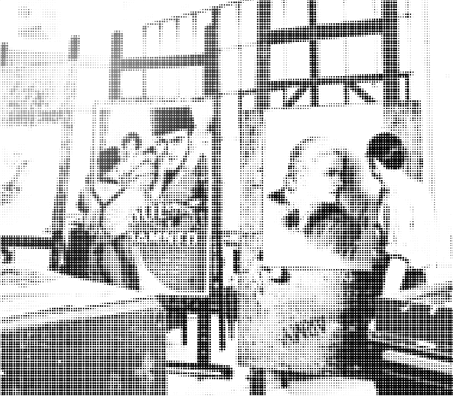



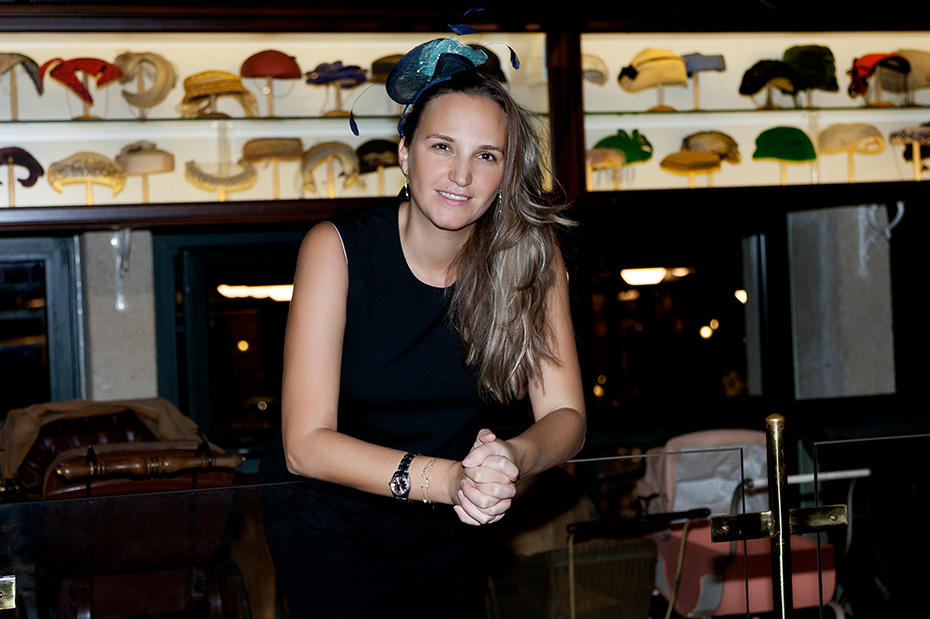
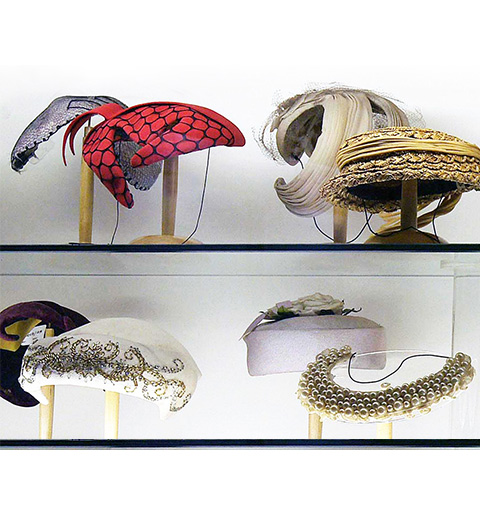
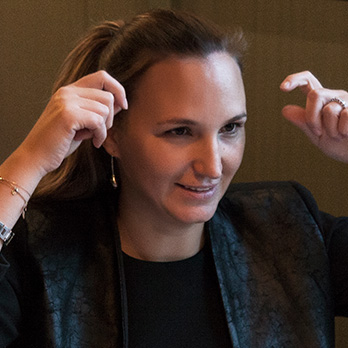


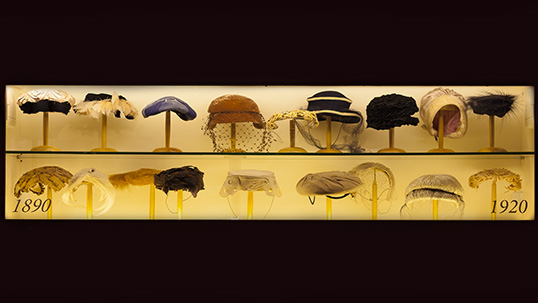
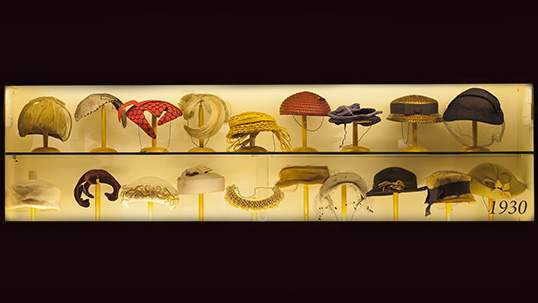
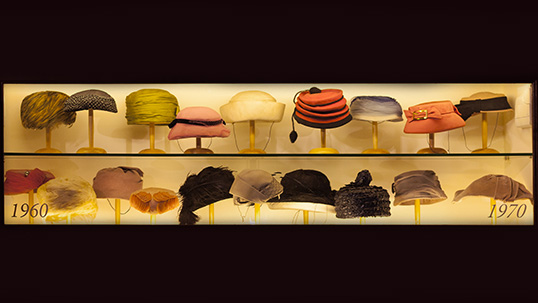
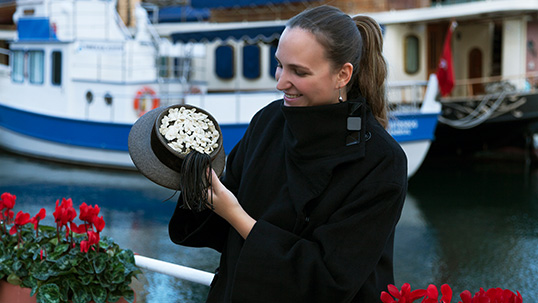
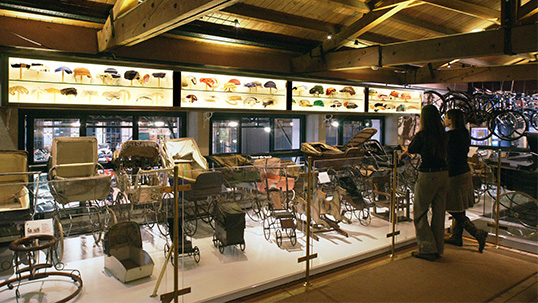
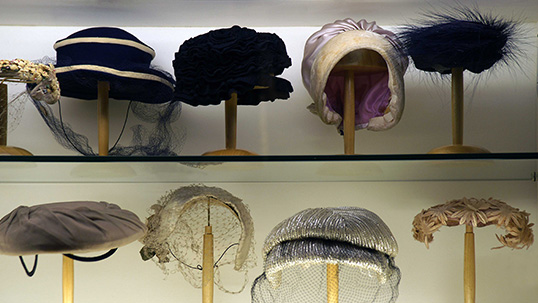
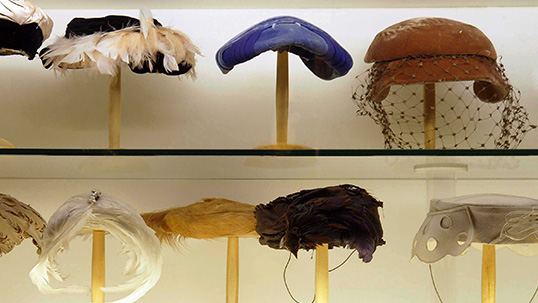
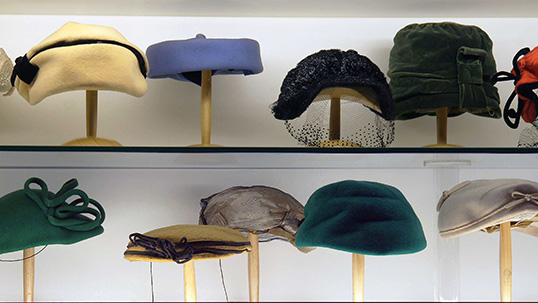
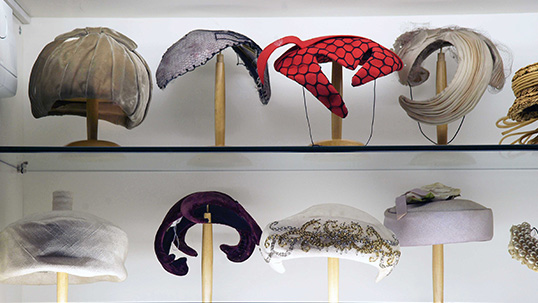
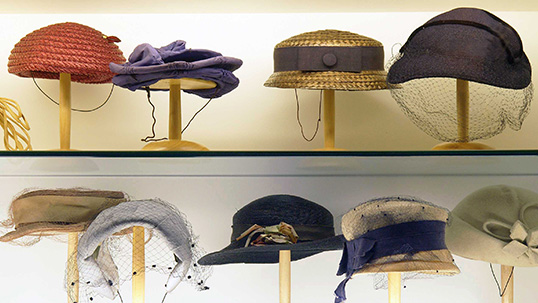
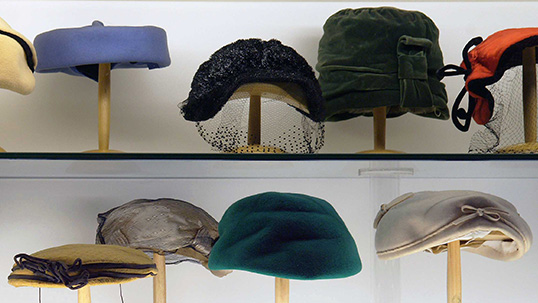
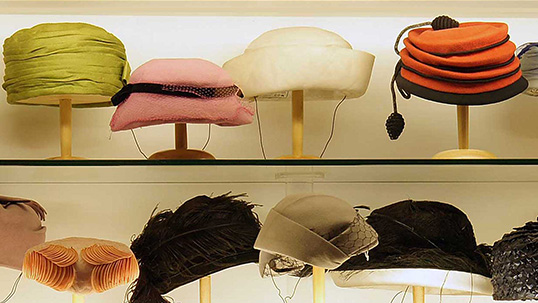
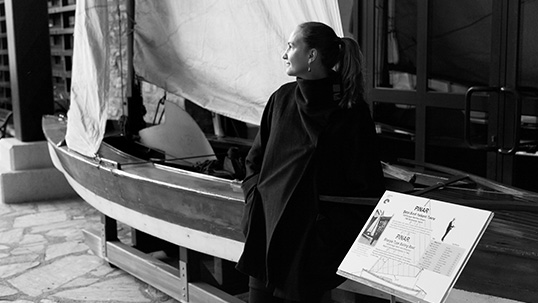




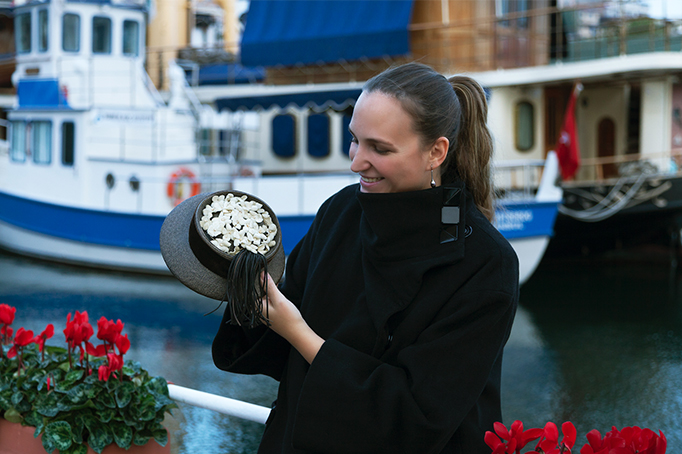
 UP
UP


